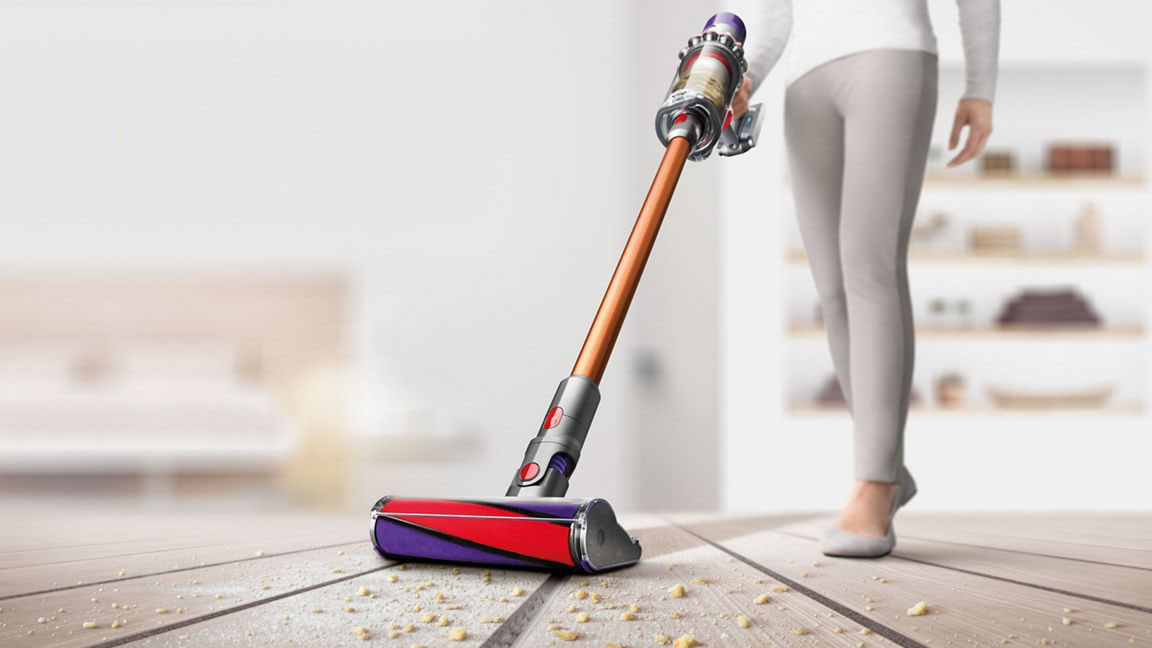
Dyson Cyclone V10: two-minute review
When Dyson launched the Cyclone V10 in 2018, it represented a compete rethink of its cordless form factor, and the point at which the brand waved goodbye to corded vacuum cleaners for good. It's now widely considered to be the brand behind the best cordless vacuums on the market – at least when it comes to innovation.
Compared to its predecessors, the V10 boasts refined cyclone technology for stronger suction, and a new V10 digital motor that's capable of 125,000 rpm (that's over 2,000 revolutions per second).
At time of updating this review – June 2024 – the V10 is one of the oldest models still included in the current Dyson lineup, and as such, these specs have been overshadowed a little by newer, fancier models. Its immediate successor is 2019's V11 (read about that one in our Dyson V11 review). There's now a V15 (read our Dyson V15 review), while the Gen5Detect offers even more advanced features (see our Dyson Gen5 Detect review for more on that). So is the Dyson Cyclone V10 still worth your attention?
On test, we were very impressed. It offers powerful suction, even on the lowest of the three settings, and is well designed and easy to use. The tools we tested are also excellent, although do note that the included attachments vary depending on which configuration you opt for (for this review, we tested the Absolute+ model, which has a wide range of tools).
The real issue is that the V11 seems to be available for a similar price, and is slightly better in almost every way (exactly how the two compare in our Dyson V10 vs V11 explainer). That makes the V10 hard to recommend outright, unless you spot a major deal. That's the short version; read on for our full Dyson V10 review.
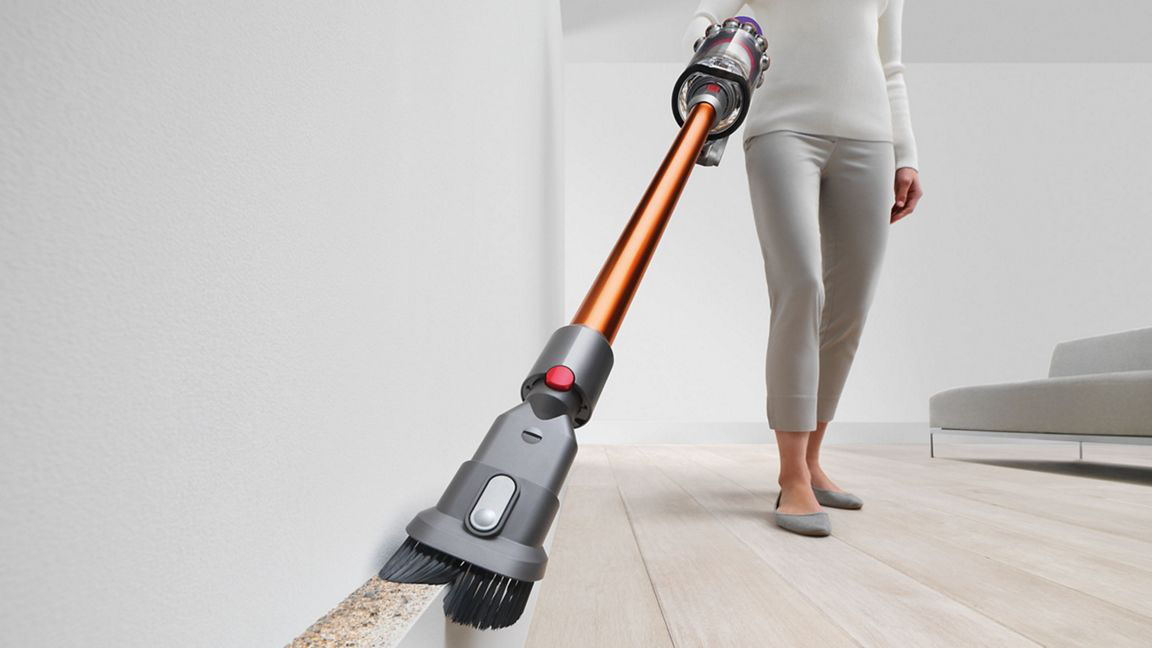
Dyson Cyclone V10 review: price & availability
- Price varies by configuration, but generally in the mid/premium bracket
- V11 available for a similar price
- Not widely available direct from Dyson any more
As with most Dyson vacuums, there are a few different variations. An extra word is added to the name (e.g. Animal) but in the vast majority of cases, the base model is the same, but there is a different selection of tools included. We'll be focusing on the models available direct from Dyson here, but there will likely be more options available via third party retailers.
At time of update, a Cyclone V10 Motorhead, with a ticket price of of US$500, is listed on the Dyson US site, but it's out of stock. In the UK, it's the Cyclone V10 Total Clean for £449.99, but again that's out of stock. In Australia, there's the regular Cyclone V10 (AU$1,099 down to AU$694 at time of update), or the Cyclone V10 Absolute (AU$1,299, reduced to AU$744).
At those prices, the Cyclone V10 is at the top of the mid-range price bracket or into premium. Interestingly, the newer and more advanced V11 is actually available for cheaper in a few cases (although it's worth doing a compare and contrast on included tools to make sure you actually are getting a better deal). As you'd expect, it's pricier than the much older Dyson V8. Today's newest and highest-specced Dyson cordless vacs are far more expensive – the Gen5Detect is $950 / £750, for example.
Because it's a slightly older model, and based on the fact that it looks like Dyson might be phasing it out, it is worth keeping an eye out for Dyson deals – around major shopping events like the Black Friday sales in particular.
Dyson Cyclone V10 review: design
- Powerful digital motor, but not as powerful as newer models
- Operated via manual switch and indicator lights rather than an LCD screen
- Array of useful accessories (vary by configuration and region)
The Dyson V10 looks very similar to most of the brand's cordless vacuums. It was the first Dyson cordless to organize all its various components in an in-line format, to achieve a more direct airflow path, and as a result, greater suction efficiency.
There's a front-facing barrel onto which all attachments connect directly. Behind the barrel sits the device's cyclone array (with 14 chambers in total), followed by a digital motor – at time of release, the smallest, and smartest, the company had engineered, and capable of 125,000 rpm (that's over 2,000 revolutions per second).
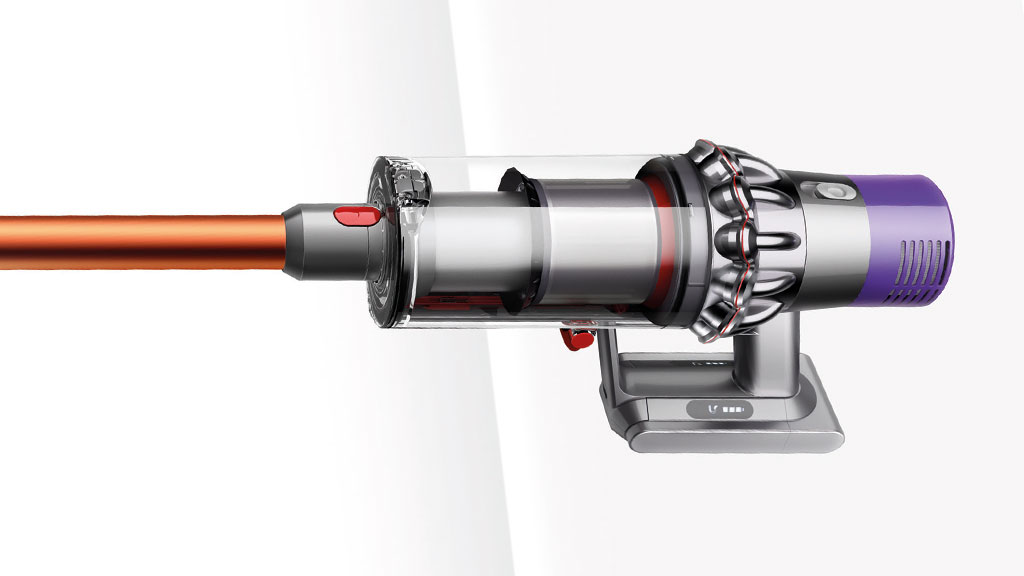
It's capable of 20 per cent more suction than its predecessor's motor (read TechRadar's full Dyson V8 review for a closer look at that one), despite being half the size, weighing only 125g (0.27lbs). In fact, it's said to be so intelligent that it can detect variables like altitude, air pressure and temperature and to adjust itself accordingly for increased efficiency. Dyson says it even knows the difference between a table and a floor.
Of course, when the V11 arrived, the motor had been improved again. But it's worth reiterating that even quite-old Dyson engineering is still very good engineering.
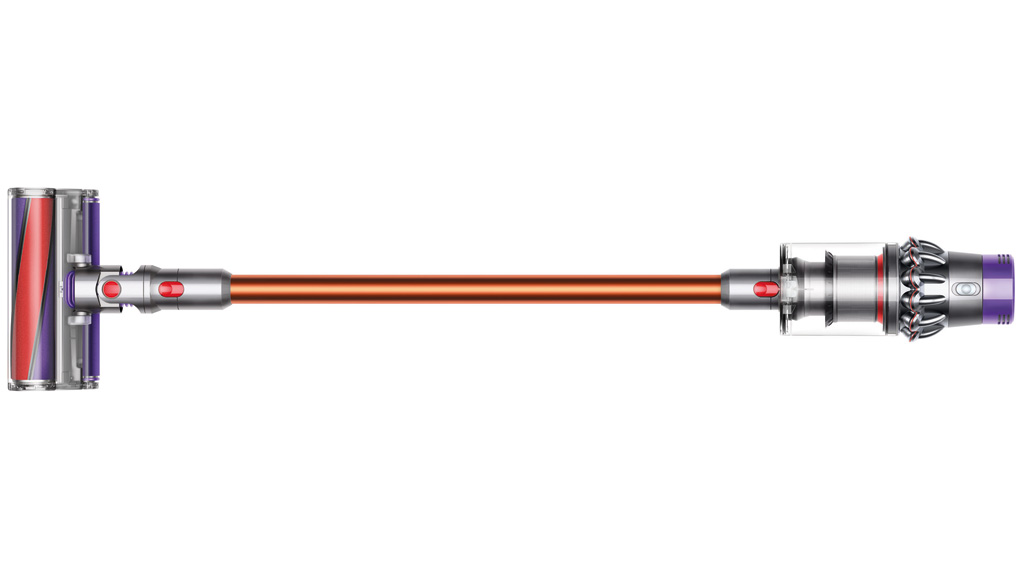
At the back end, you'll find the V10's filter, which you can remove with one simple counter-clockwise twisting motion. An LED indicator on the base of the unit will let you know when it's time for a wash (later models have an LCD screen that displays information like this, amongst other things). This filter is said to be capable of capturing 99.97 per cent of allergens in the air – even ones as small as 0.3 microns in size.
The front-facing bin is 0.77L, the same size as the V11 but significantly bigger than the V8. It has a 'point and shoot' emptying mechanism that makes it easier to transfer dust and rubbish directly into a trash receptacle or plastic bag.
The one downside to having a front-facing bin is that you'll now have to remove any attachments whenever you want to empty the device – although chances are you were already doing that anyway and never realized.
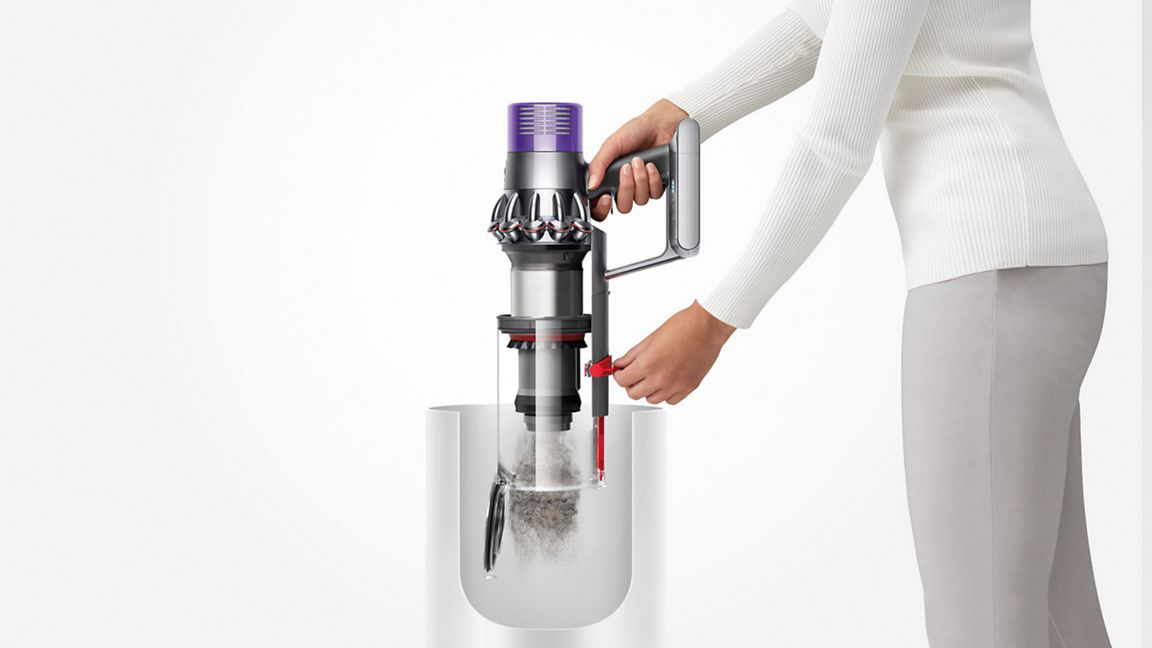
Opening the bin is as simple as pushing down the red release valve under the unit, which slides the whole bin down in the process and expels any contents within. Admittedly, this plastic flap feels a little delicate, so we're hoping that it stands up to repeated use. A flexible rubber lip on the inside of the bin prevents almost all dust and debris from getting into the back of the bin, but we've found that even when dirt does slip past, it still gets pushed out during the emptying process.
Following the trend it started with the V8, Dyson has banished attachment release buttons from the V10, opting to place them on the accessories themselves. This makes it much easier to detach vacuum heads and extension tubes in one swift movement, though it does mean that all accessories released prior to the V8 will be incompatible.
Dyson Cyclone V10 specs
Dyson V10 review: performance
- Powerful even on the lowest setting
- Lasts 30 minutes on medium, or up to an hour on low power
- Tools are well designed and easy to use
Thanks to its digital motor and 14-cyclone array, the Dyson Cyclone V10 sucks big time. We don't mean that in a negative sense – it's actually a huge compliment in the vacuum world. In the weeks we've had to put V10 through its paces, it has performed incredibly well in pretty much every dry vacuuming scenario.
There are three power settings available on the V10: low, medium and maximum. Your usage of each will probably be governed by the surface (or spillage) you're cleaning, and how much charge your unit is holding. You can gauge this using the LED indicator lights when the vacuum is in use. (From the V11 onwards, this system is replaced by an informative LCD screen.)
You can vacuum continuously for up to 60 minutes on the lowest setting. We found that setting was generally more than strong enough to lift any dirt we put in front of it.
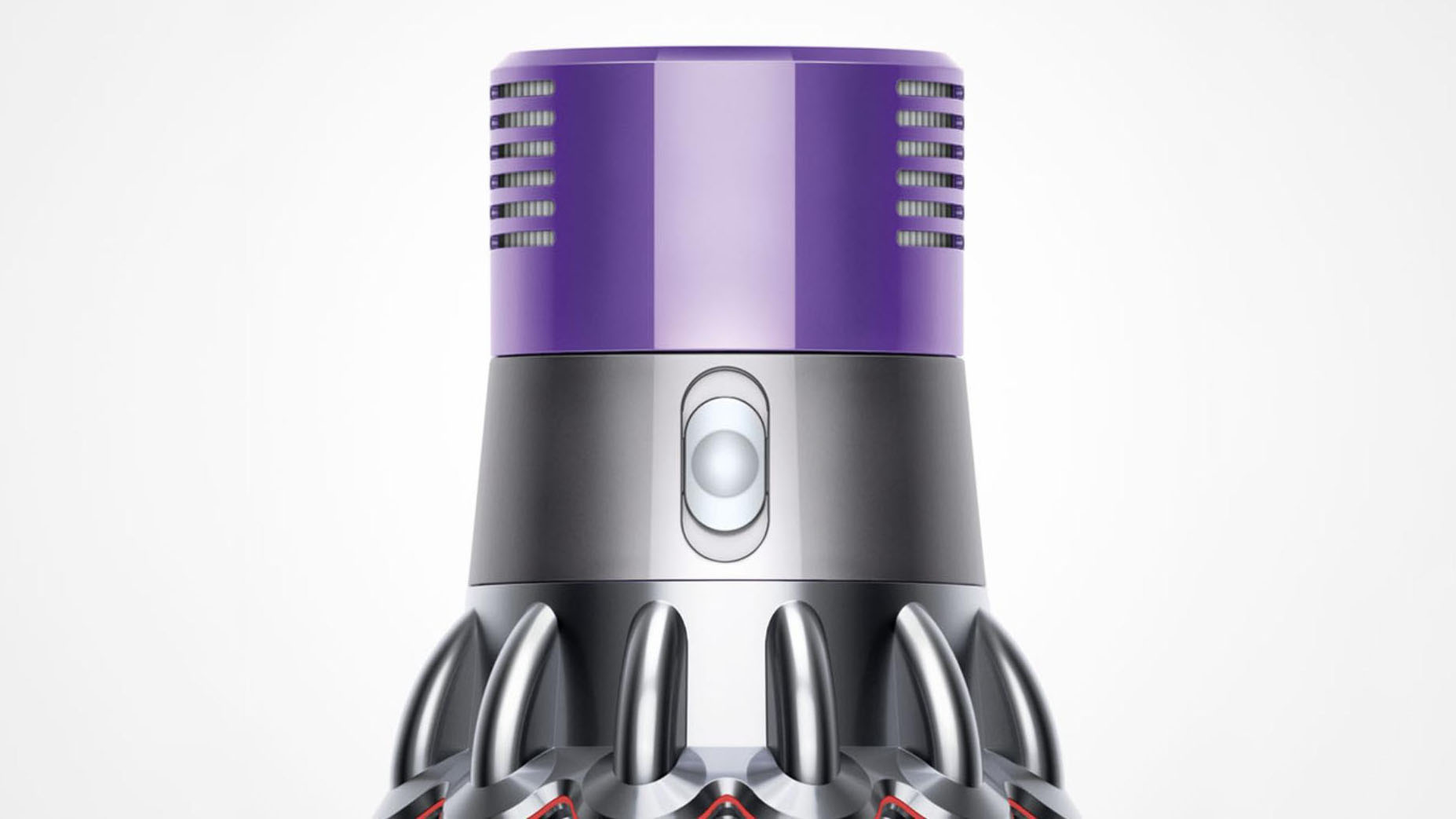
Maximum power offers incredible suction (this tester put their fingers up to the vacuum head and was amazed by how strong it was – enough so that we'd firmly suggest not trying this yourself). Unfortunately, this setting will completely drain the battery after roughly five minutes of usage... but it's still useful to have in an emergency.
It's our opinion that the V10's medium power setting, which will give you around 30 minutes of continuous usage, is the one you'll be using most of the time. During our reviewing time, we found that we only really needed to unleash the maximum setting for small vacuuming sessions and those occasions where we had really stubborn dirt trapped in our carpets or rugs.
In terms of recharge, it takes roughly 3.5 hours to go from a completely flat battery to a full charge.
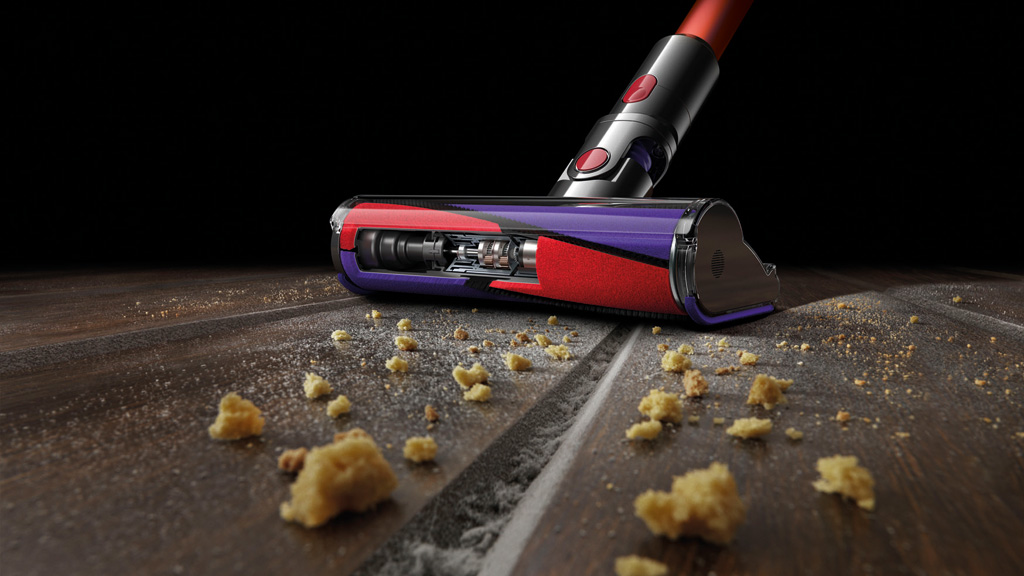
The Direct Drive attachment is is the standard vacuum head that you'll likely get the most everyday use out of, though our favorite tool has to be the Soft Roller Cleaner Head, which is capable of picking up bigger pieces of debris like pet kibble, cereal, cat litter and more.
Other notable attachments include the Mini Motorized Tool, which is great for vacuuming on stairs or upholstery, the pointed Rigid Crevice Tool, which lets you vacuum deep into corners and crevices, and the Flexi Crevice Tool, which features and extendable hose. This one's particularly useful for when you want to vacuum inside confined spaces, like the interior of a car. (Do note, different configurations of the V10 come with different tools, so make sure your model has the ones you need before purchasing.)
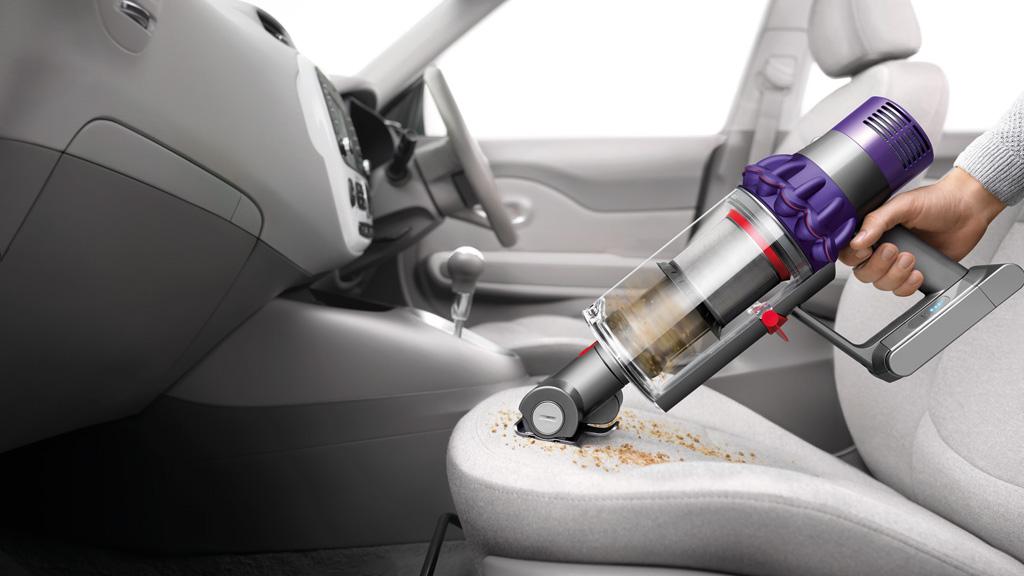
As is seemingly unavoidable with stick vacuums, we did experience a few blockages on occasion. We found that tissues and wrappers would frequently cause the V10 to jam up, with the only solution being the immediate removal of said obstruction.







